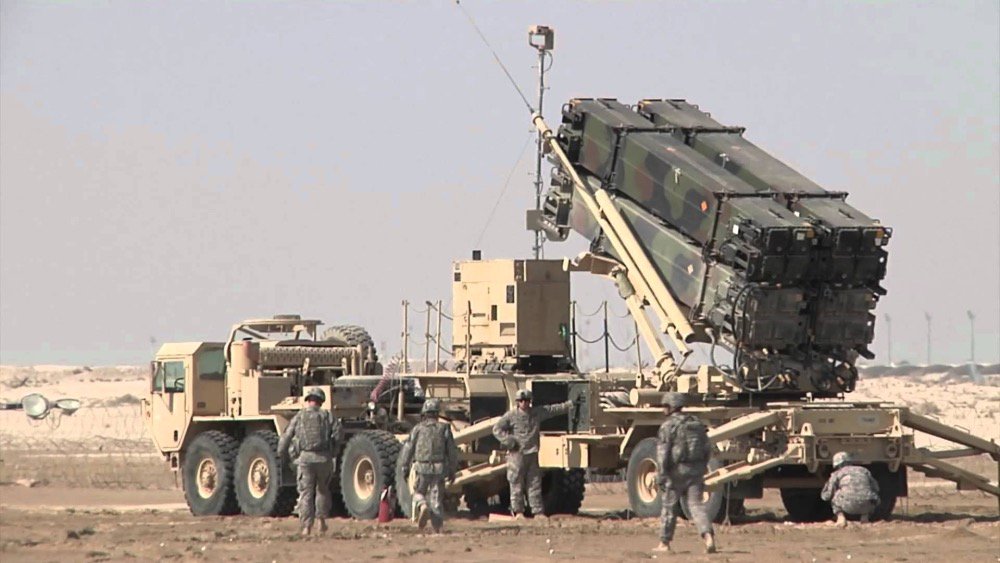Poland Signals Russia With Huge Missile Defense Deal
Posted on

Poland inked the largest weapons deal in its history today, agreeing to a $4.75 billion deal with Lockheed and Raytheon to buy Patriot air defense systems, PAC-3 missiles, and radar systems.
“It’s a historic moment,” Polish President Andrzej Duda said at a signing ceremony in Warsaw. “We’re fitting the Polish army with the most advanced defense system in the world.” The deal, which will initially include two Patriot batteries, was finalized just a month after the Kremlin permanently deployed nuclear-capable Iskander cruise missiles to its Kaliningrad exclave on the Polish border.
“It’s a lot of money, but we also know from our historical experience that security has no price,” Duda said, in an obvious reference to World War II, when Polish cavalry faced German tanks.
One significant part of the deal — first announced last year but which quickly ran into trouble with the Polish government after the original $10 billion price tag was revealed — are several offset agreements Poland signed earlier this month. The contracts will ensure that the Polish defense industry is involved in the building of the Patriot systems. Poland’s defense ministry said Friday that the offset agreements will be worth about 950 million zloty, or around $280 million.
Prime Minister Mateusz Morawiecki said Wednesday that the deal had been “very well negotiated” to include an offset package to “increase the production capacity of Polish plants.”
“Signing the offset agreement with the Polish MOD sets the stage for the creation of new jobs in the US and Poland, and strengthens the Trans-Atlantic partnership by fostering the exchange of information and ideas between US and Polish industry,” a Raytheon spokesman told me.
“We are joining an elite group of states which have an efficient weapon that guarantees security,” Polish Defense Minister Mariusz Blaszczak said. The Polish Patriots will join 15 other nations who already field the capability, including Romania, who signaled its willingness to buy seven Patriot batteries in November.
In the first phase of the program, Poland will receive two Patriot batteries consisting of 16 launchers and PAC-3 rockets. Additional phases will likely include six more systems, along with the 360-degree Active Electronically Scanning Array Radar, and SkyCeptor, a lower-cost missile. The first delivered unit should be operational by 2024.
The first systems to deploy will also include Northrop Grumman’s still in-development Integrated Air and Missile Defense Battle Command System, (IBCS), which has yet to be fielded to the U.S. Army after a series of system failures during testing. A modified version of the U.S. Army IBCS will be sent to the Poles, who will use the software as the backbone of their command-and-control network for air and missile defense forces. That puts the Poles on the cutting edge, because IBCS won’t even enter US service until 2022 — and that’s as a limited Initial Operational Capability or IOC. The full version of IBC will link all air and missile defenses into a single integrated system that can take on everything from mini-drones to ICBMs.
Once the Patriots start coming online in 2024, they will join the U.S.-made Aegis Ashore missile defense system slated to go online in 2020. The original fielding date of 2018 had recently been pushed back by the Missile Defense Agency due to what they say are problems with construction.
The Aegis complex will integrate into the larger U.S. European Phased Adaptive Approach program, envisioned as a way to provide a limited missile defense for the continent. The EPAA includes radar, missile and fire control sites in Romania and Poland; a ballistic missile defense radar in Turkey; and command and control center in Germany. There are also several American Aegis-equipped destroyers home-ported at Rota, Spain.
The first Aegis Ashore system went live at the Deveselu Air Base in Romania in May 2016, which drew a scathing response from Moscow. But NATO insists the system is purely defensive in nature, and are there to detect and counter Iranian missiles. But Moscow continues to call the capability on its doorstep a “direct threat.”
Subscribe to our newsletter
Promotions, new products and sales. Directly to your inbox.
